Particle simulations in a nutshell: modelling CERN's gigantic detectors
After all issues that crossed my way recently, I would have loved to get a calmer moment in the flow of my life. The situation has however not improved, and as a final bonus COVID is now living with us at home. Although I am still COVID-negative (at least for now), the week-end did definitely not allow me to fully rest.
Writing is nevertheless always a good way to disconnect from the on-going burden. I decided today to discuss one of my scientific publications from 2021, that is fully open access for those interested in downloading the actual paper. In this article, two collaborators and I proposed a novel detector simulator that could be used to parametrise the effects of any particle collider detector.
The choice of this weekly topic is not random. Detector simulators consist of a useful subject for the citizen science project in particle physics that is currently on-going on Hive. For those interested, the third episode is scheduled for next week, to give more time to the participants to write their report from last week, and there is still plenty of time to embark with us in this adventure. Please consider having a look to the #citizenscience tag for more information.
Before moving forward, I would like to refer to the two previous blogs that I wrote on particle collider simulations (see here and there). In those blogs, I have explained how we connect a particle physics model to an event, or a specific collision such as those on-ongoing in a particle collider. In this blog, I move on with the natural next step in this process: how to connect a collision to its record in a detector, and how to simulate this on a personal computer.
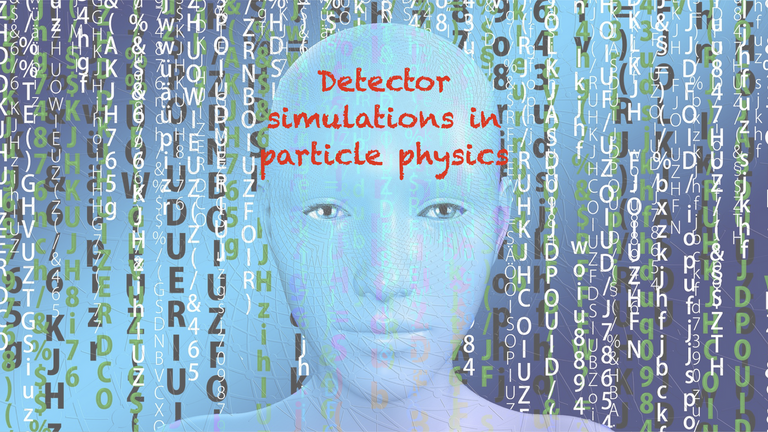
[Credits: Original image from geralt (Pixabay)]
Particle collision in a nutshell
As detailed in this blog, a particle collision includes several factorisable sub-processes. This means that we can consider them one by one, and thus simulate them on a computer one by one with appropriate numerical tools.
At the inner center of the particle collision lies what we call the hard process, which is where the highest energy is available. The hard process therefore allows for the production of heavy elementary particles that could be either known particles from the Standard Model or hypothetical particles beyond it. For instance, we could consider the production of a top-antitop pair (like in the citizen science exercise of last week) or the production of leptoquarks or supersymmetric particles.
Heavy produced particles then decay, before being subjected to the strongly-interacting environment inherent to a collider such as CERN’s Large Hadron Collider (namely the LHC). This includes parton showering and hadronisation, which can be defined as follows.
The starting point is that any produced strongly-interacting particle radiates other strongly-interacting particles, that radiate themselves other strongly-interacting particles, that radiate themselves other strongly-interacting particles, etc. At each radiation, a given particle splits in two so that the energy of any individual particle decreases (energy being conserved).
The entire radiation process (in red in the figure below) stops when the energy gets small enough for hadronisation processes to occur. In those hadronisation processes (in green in the figure below), strongly-interacting elementary particles combine and form composite particles made of quarks and antiquarks. These composite particles are generically called hadrons, and known examples include neutrons and protons.
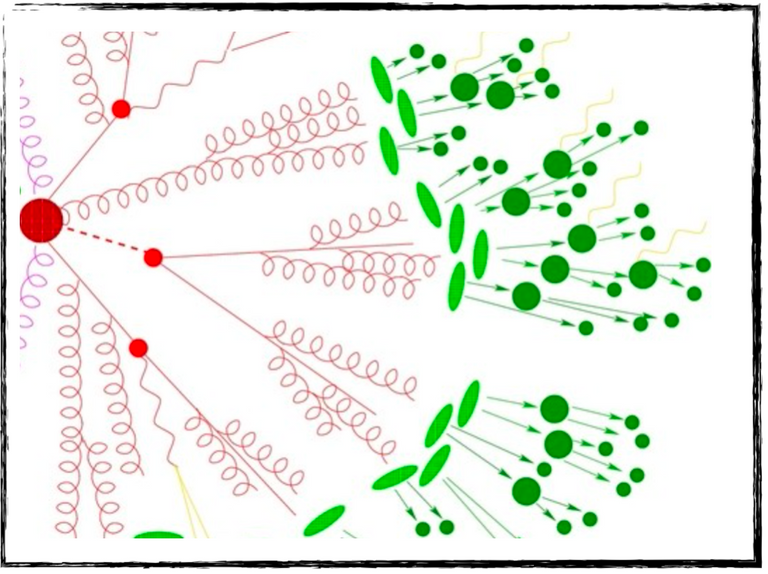
[Credits: A Sherpa artist (image available everywhere in the HEP community)]
In other words, any strongly-interacting particle produced in the hard process or originating from the decay of an unstable particle gives rise to a large number of hadrons. The quantum theory of the strong interaction tells us that all these hadrons are organised in collimated jets of particles more or less flying in the direction of the initial strongly-interacting particle. This is a very useful property that we can use to simplify our vision of the final state of a collision. Instead of considering all the numerous produced hadrons, we apply a clustering algorithm (called a jet algorithm) to cluster all produced hadrons into a small number of higher-level objects called jets.
This is illustrated in the figure below that shows a cross section of the CMS detector of the LHC. We can notice a lot of tracks in the detector (in green, in the centre) and a large number of energy deposits (in red and blue, all around the detector). Those come from all the particles produced in the collisions, and in particular from all hadrons. As said above, we can use a jet algorithm to deal with the hadrons and combine them into jets. This is what the yellow cones on the figure do.
The final picture of the collision shown in the figure below gets hence much easier to grasp: there are three jets with a significant amount of energy (see the labels) and some missing transverse energy (also labeled) taken away by Standard Model neutrinos or even dark matter for models of physics beyond the Standard Model. This is a much simpler view than hundreds of tracks and energy deposits left by hundreds of hadrons.
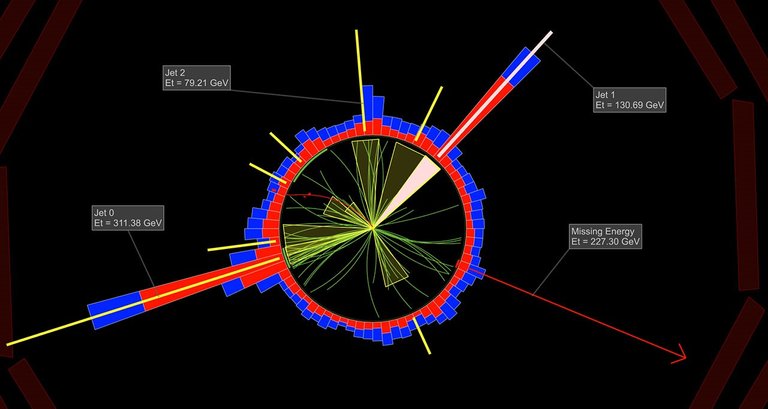
[Credits: CMS @ CERN]
To summarise, whatever is on-going in a real collision, the story always ends with a small number of objects: electrons, muons, photons, missing energy and jets. We can thus classify all produced collisions in terms of the number of electrons, muons, photons and jets that they feature, together with the amount of invisible stuff (i.e. missing energy). Anything else (for instance a Z boson or a Higgs boson) is an unstable particle that always decays into several of these basic objects almost instantaneously.
Detector effects
As briefly mentioned above, all objects in which we are interested (electrons, muons, photons, missing energy and jets) manifest as tracks and deposits in a detector. Therefore, the difficulty consists of connecting those tracks and deposits into the initial objects that produced them, so that physicists could have a fair idea of what the final state of any given collision is. In other words, we need to convert a large numbers of tracks and energy deposits in small numbers of high-level objects with well-determined properties.
This is achieved through dedicated reconstruction algorithms, that take as inputs those tracks and energy deposits and return as output high-level objects. This is however not a so straightforward process, because of inefficiencies. For instance, an electron may end up giving rise to few tracks and hits that are not of a good enough quality to be useful.
These inefficiencies could even lead to misleading information implying a bad resolution on the electron’s properties. In the most extreme case, the electron could also end up being totally missed. In this last situation, tracks and hits are present in the detector, but their quality and/or properties do not allow us to associate them with any high-level object.
Finally, there is also the possibility to reconstruct the electron as another object. For instance, electrons faking jets is a possible option. And of course, we can have a situation where for some reason any object of type A is reconstructed as an object of type B.
The above discussion allowed for the introduction of the three big classes of detector effects.
- Reconstruction efficiencies: This corresponds to the probability to actually reconstruct an object from its impact in a detector. This can be a large or small probability, depending on the object properties (its energy, direction, etc.).
- Smearing: The estimation of the properties of a given object is not a perfect science. Inaccuracies are possible, and the actual performance depends on the object properties (again!).
- Identification: There is always a possibility to correctly and incorrectly identify the nature of a reconstructed object. Again, this tagging efficiencies and mistagging rates depend on the object’s properties.
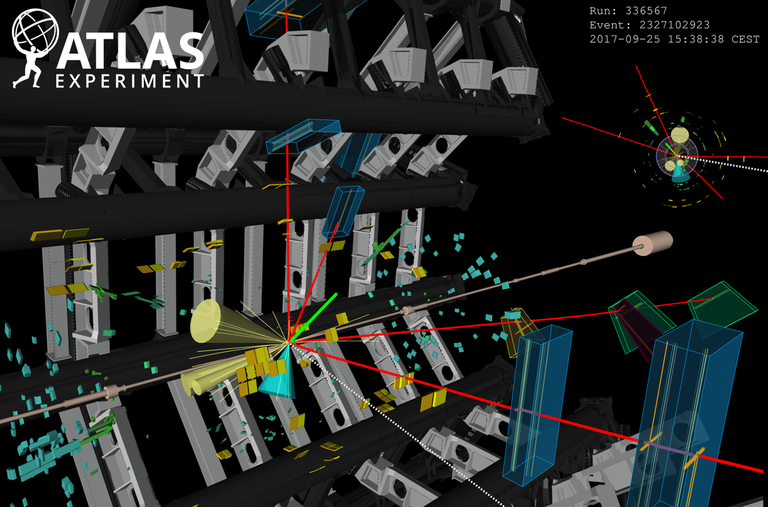
[Credits: CERN]
In order to estimate all relevant probabilities related to detector effects, experimentalists make use of simulations, data and “standard candle processes” that are extremely well known. They fully simulate their gigantic detectors through the GEANT4 package. Such a package allows for the modelling of the detector geometry, that of the interactions with the detector material and it finally includes the simulation of the electronic response of the detector. From there, reconstruction algorithms are put in place to connect tracks and deposits to higher-level objects.
These tasks are however unachievable for anyone who is not part of any big experimental collaboration, mostly due to missing public information allowing to do so. Moreover, achieving it is computationally unfeasible, as it requires minutes of computing time for any single simulated collision. I leave you here with a math exercise, to calculate the resources required for the hundreds of millions of simulated collisions needed by physics analyses… This is really a job that can only be done by experimental groups and their huge amount of available computational resources.
In my work, we introduced a new framework allowing anyone to easily (in terms of computer resources) add detector effects to their simulations.
The SFS framework for detector simulations
In spite of all the potential computer-resource problems related to detector simulators, the probabilities relevant to resolution, reconstruction and identification efficiencies are often released publicly in the form of functions of standard object properties (that are generically called transfer functions). We can thus make use of this to design a computationally more efficient approach than the naive one. The price to pay (there is indeed no free lunch) is that the detector effects are obtained in an approximate manner. However, as long as the approximation is under control, it is fine to use it.
Somewhat, we gain in efficiency for a small loss in precision (which we will keep under control). This is what we achieved in the article that this blog discusses. We coined our framework the SFS framework where SFS stands for ‘simplified fast simulator’.
Our idea was to start from hadron-level simulated collisions, as described above and in the previous blogs on particle collider simulations (see here and there). On each of these hadron-level events, we apply first a jet algorithm. This corresponds to a post-processing of the event final state to determine its content in terms of the high-level object of interest (electrons, muons, photons, missing energy and jets).
In practice, we proposed to make use of the MadAnalysis5 platform as it was capable to handle this reconstruction already automatically. The reason behind this choice is a trivial one: MadAnalysis5 is a package that I co-develop with two friends (one of them being an author of the scientific publication considered today)! By the way, we plan to use this software next week in our citizen science project on Hive.
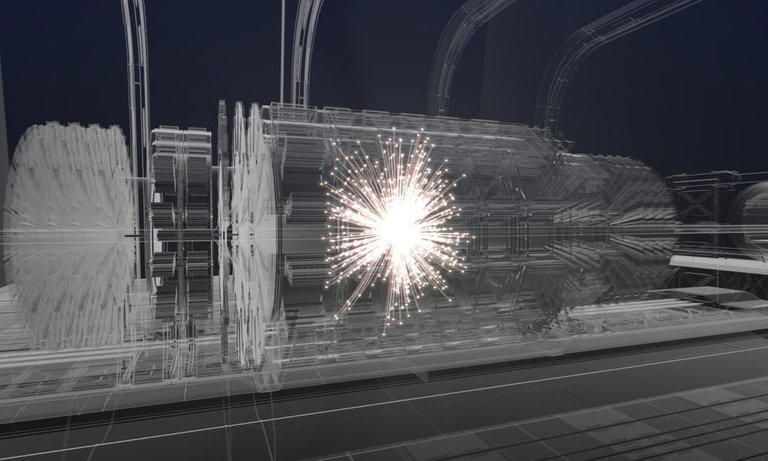
[Credits: CERN]
After running the jet algorithm, we obtain a “perfect collision event” that corresponds to a simulated collision recorded through a perfect detector. This is of course not what we want, and we now need to add all detector effects described above (reconstruction, smearing, identification). To this aim, we extended the MadAnalysis5 framework so that published detector transfer functions can be easily implemented within an intuitive Python-like meta-language.
For instance, the code has now a way in which we could teach it the probability at which an electron with well-defined properties is actually reconstructed as an electron. Moreover, we can instruct it how the electron properties are degraded because of the detector resolution. At the end of the day, it becomes sufficient to take the list of published transfer functions, and implement them directly in MadAnalysis5 so that we could use them to simulate the effects of LHC detectors like ATLAS or CMS.
MadAnalysis5 then automatically generates an associated C++ program that is run. The properties of the different reconstructed objects are smeared, objects can be lost in the process and even change nature. We implemented enough flexibility so that there are very few limitations relative to what we expect from a detector simulator. The “perfect event” is converted into an imperfect one.
Very importantly, we have found that compared with competitor programs, we were up to 50% faster for a much smaller disk-space consumption. On the physics side, results were additionally found in good agreement with the expectation. It is not only important to be efficient; it is also crucial to be physically correct.
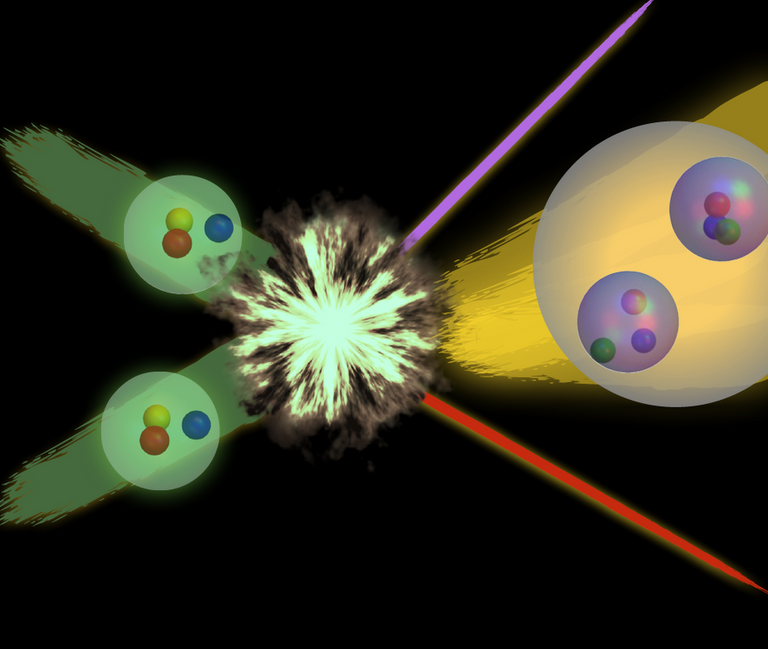
[Credits: OLCF (CC BY 2.0)]
TLDR: a new detector simulator is born!
In this blog, I discussed one of my recent scientific publications. In this article, collaborators and I focused on particle collider simulations, and extended an existing piece of software (that is called MadAnalysis5 and that we develop). The code’s extension concerns a new ability for MadAnalysis5, that is now able to efficiently simulate detector effects.
We implemented methods to deal with all three big classes of detector effects:
- Reconstruction: Any particle that interacts with the detector material leaves into it tracks and energy deposits. Therefore, physicists need to convert tracks and deposits into the objects that generated them. This is always done with some probability, so that there is a way in which the initial object could be lost in the reconstruction process, polluting somewhat our vision of the final state of the collision.
- Smearing: The resolution of the detector effectively yields some smearing on the calculation or on the extraction of any object’s property. Particle physics detectors are not perfect machines, although we built them in order to be as precise as possible. We thus need to provide a way to assess the degradations caused by the usage of imperfect detectors.
- Identification: Finally, the reconstruction of an object from tracks and deposits is one thing. Reconstructing the object correctly is another thing. It may happen that the properties of the object are correctly estimated, but that the nature of the initial object is wrongly recovered. This mis-identification possibility has thus to be included in the simulations, especially as it is more common than what we could naively imagine.
In order to include these effects in particle collider simulations, MadAnalysis5 relies on probabilities obtained from public experimental information. In our approach, that we named the SFS approach, we always give the code a chance to wrongly reconstruct something, lose an object or mismeasure its properties according to published probabilities (that are functions of object’s properties).
We have of course verified that the obtained simulated collisions were in good agreement with the expectation from the LHC detectors, so that the code is ready to be used for real physics project. As a side note, this code is already used by dozens of work and one of the next ones is expected to happen on this chain!
As usual, please do not hesitate to ask me anything (or to provide any feedback) in the comment section of this blog.
I wish all of you a very nice week, and see you next Monday!
Congratulations @lemouth! You have completed the following achievement on the Hive blockchain and have been rewarded with new badge(s):
Your next target is to reach 13000 replies.
You can view your badges on your board and compare yourself to others in the Ranking
If you no longer want to receive notifications, reply to this comment with the word
STOPCheck out the last post from @hivebuzz:
Your content has been voted as a part of Encouragement program. Keep up the good work!
Use Ecency daily to boost your growth on platform!
Support Ecency
Vote for new Proposal
Delegate HP and earn more
I am still confused what has floating aluminum have to do with time travel? :3
Thanks for passing by... I definitely smiled with this comment :)
More concretely, I have never heard about this manga. The least I can say is that the dialogue looks sciency. Note that I wrote "look" and not "is". This may be a nice series to watch to relax and have fun (unfortunately I have no time to relax at the moment). ^^
Personally I liked the show until a certain point midway, then it got kind of annoying and confusing. I think "sciency" is the right word. It is not an actual science show or sth.
SERN, which is just the anime renamed version of CERN, is a major plot point and all in all I think you might enjoy this much more as a scientist than One Piece or Naruto ;)
That is also my problem with most series and mangas. I usually like a few episodes and then quickly get bored and quit.
I definitely noticed the resemblance ;) However, I for now have very little free time so that I don't know when and if I will give it a try. I have nevertheless added this title on my watch list. We will see.
https://twitter.com/BenjaminFuks/status/1510960708942544901
The rewards earned on this comment will go directly to the person sharing the post on Twitter as long as they are registered with @poshtoken. Sign up at https://hiveposh.com.
Thank you for such an interesting post!
!1UP
You are welcome. The pleasure was actually for me when I wrote this blog ^^
You have received a 1UP from @kwskicky!
@stem-curator, @vyb-curator, @pob-curator, @neoxag-curator, @pal-curatorAnd they will bring !PIZZA 🍕
Learn more about our delegation service to earn daily rewards. Join the family on Discord.
Hello dear friend @lemouth good afternoon
I am very sorry for what you are going through, with this condition that plagues the world. I hope that the symptoms are mild, as have been the behavior of this new variant
We also had to go through this condition, we have been almost a week to recover from this disease
Get well soon.
Thanks for this nice message and asking about me and my family.
The symptoms are not very severe, but they are enough to KO my wife. At the moment, I also have one of the boys with more than 39 degrees of fever... So, let's see. Tomorrow has a potential to be a tough day again...
I wish you a very nice week!
Thanks for your contribution to the STEMsocial community. Feel free to join us on discord to get to know the rest of us!
Please consider delegating to the @stemsocial account (85% of the curation rewards are returned).
You may also include @stemsocial as a beneficiary of the rewards of this post to get a stronger support.
Awesome! It's quite a bit to digest, so i know i'll be back to read this blog a couple times. Thanks for taking your time to come up with the post, given how the past week has been for you! Please do stay safe and i wish the covid patient a speedy recovery in isolation :)
In fact, I wanted to write something short... I have probably failed (no kidding). I however believe that such a blog is better in its current length than in any other potential shorter version. A shorter version would mean that I would have less space for explanations... some some explanations being already very summarised and compact.
In fact, there is no special need to read everything in one shot and readers pushed for time can focus on the first and last section of the blog only. The rest is more there for interested readers. I should maybe emphasise this in the introduction a bit more, to avoid scaring people. Any thought on this point?
Cheers!
PS: the COVID person was better this morning, but quite KO yesterday and the day before. One of my sons is however showing some symptoms (fever, exhaustion, etc.).
Adding where to focus on, in the introduction definitely sounds great! I'd definitely check such out first, before i get to read through the whole blog and digest the content :)
My regards to everyone at home! I'm hopeful you all feel much better in a couple days.
Thanks for the suggestion. I will do it for my next post, hopefully next week. :)
Looking forward to the next post already :)
I will write it soon... soon ;)
😟
Oh my god, I didn't know what you have been dealing with was like that.
Just found the time to check out my feed and get to this post. I was supposed to give a negative feedback as stated in my last comment, but nope! :(
Really sorry for what you are going through @lemouth, my best wishes to your wife and the boy for a speedy recovery. And for you and the rest of the family to not catch it.
Hopefully everything will be alright!
I have been through very emotional issues at work, and they only started to calm down nowish (although there is still some impact on my daily life). This COVID situation is just adding up on the pile... at least for now everyone is slowly getting better. This is a relief.
This being said, I am thus ready for the negative feedback. Please tell me ^^
Cheers!
Things do seem to pile up like that. Used to be "having a bad day", but sadly these days it's getting extended for weeks or more... Glad to hear they are recovering now!
Hahaha, I couldn't find something negative to say this time, I read in other comments about the length of articles, but I already know the drill as we discussed yesterday.
Worry not, I will do it where I find something ;)
Thank you!
Hope your situation and your family will get better soon ;)
I've always had a love-hate relationship with simulations, preferring risking burning (really cheap) things up instead of going through the process of simulating everything, but I'm slowly changing my mind. It's great to see that something as complex as the detector can be simulated without many resources.
Soon or later I guess. My son is now better.... So it goes in the right direction.
Thanks for your comment by the way. Note that we didn't invent the wheel here, but only add some functionalities to an existing platform so that simulations can be done more easily and more straightforwardly.
Cheers!
Hello @lemouth, Will we ever be COVID-free? I am getting so tired of hiding from this thing. It has found your house twice. It does seem to like revisits. Your stress level must be sky high... and yet you post another 'lesson'.
I like your images this week. Sometimes I find them confusing but in these cases I am able to track the 'jets' and it makes sense to me that the hadrons are 'organized into collimated jets and that these would be easier to work (predict behavior and outcome?) with than loosely associated particles.
Every week I come away with another piece of understanding. Thank you.
I wish you calm and peace in the separate parts of your life.
I do not think we will ever be COVID-free again. But we may end up with a situation that will be "lnfluenza-like" so that it will be fine for most people. The thing is I am not so sure we are already there. My wife was someone in a good shape, and she is completely down (and still positive) for 4-5 days. Doing any single effort is basically burning out all her energy. Anyway, there is nothing much to do but waiting.
Thanks for the comments on the images chosen for this blog. It is actually very hard to find good (and free-to-use) images, as I don't have much time to create them from scratch (although this may be of course one of the last possible options).
i have started to think about what to discuss next Monday and I am a bit puzzled. Either again some simulation-related stuff, or maybe something more general about composite models. I still have a few days to think about that... ;)
Cheers and have a nice end of the week!
PS: I will be on your side of the pond for a week, very soon (namely in Boston area).
I am so sorry about your wife. Do you guys have the oral therapeutic (Pfizer’s Paxlovid)?
I wish knew enough to suggest a topic for next week's blog, but I don't:)
Travel safely, @lemouth. I wish speedy recovery for your family and continued negative tests for you.
No, this treatment is not proposed here to people who are simply sent back home when COVID-sick. My wife simply had some rest, and she is presently slowly recovering. The process is however very slow. I hope she will be better by the week-end, so that we could fully enjoy it. We will see!
Interesting post sir but over here, there's nothing like COVID.
My boss Sorry for such incident, do try to rest sometimes. Wishing her a quick recovery.amen🙏
I will do my best to do my best with COVID... But this is beyond my control (two positive at home from this morning).
But what's the government doing about that in your country side. Any measure to curb it?
Not much. We are in a presidential election period and all indicators seem not great. However, the only important numbers are the ICU numbers. The rest, it is just a matter of people getting isolated for a week or so, and it is fine. Annoying, but fine.
PS: they just agreed on a 4th vaccination job for people at risk.
You are still on the good side unlike us here. If actually we have cases of covid-19 here. No serious concern would be taking to curb it when it concerns with the poor masses. Our leaders are too centric and selfish.
Yeah, I have read that on posts from others (and yours too). You still have a long way to go before getting to some more reasonable government... Good luck with this.
Thanks boss
You are welcome my friend!
You are welcome 🥰
This is awfully frustrating sir take care of yourself, be on guard and on God.